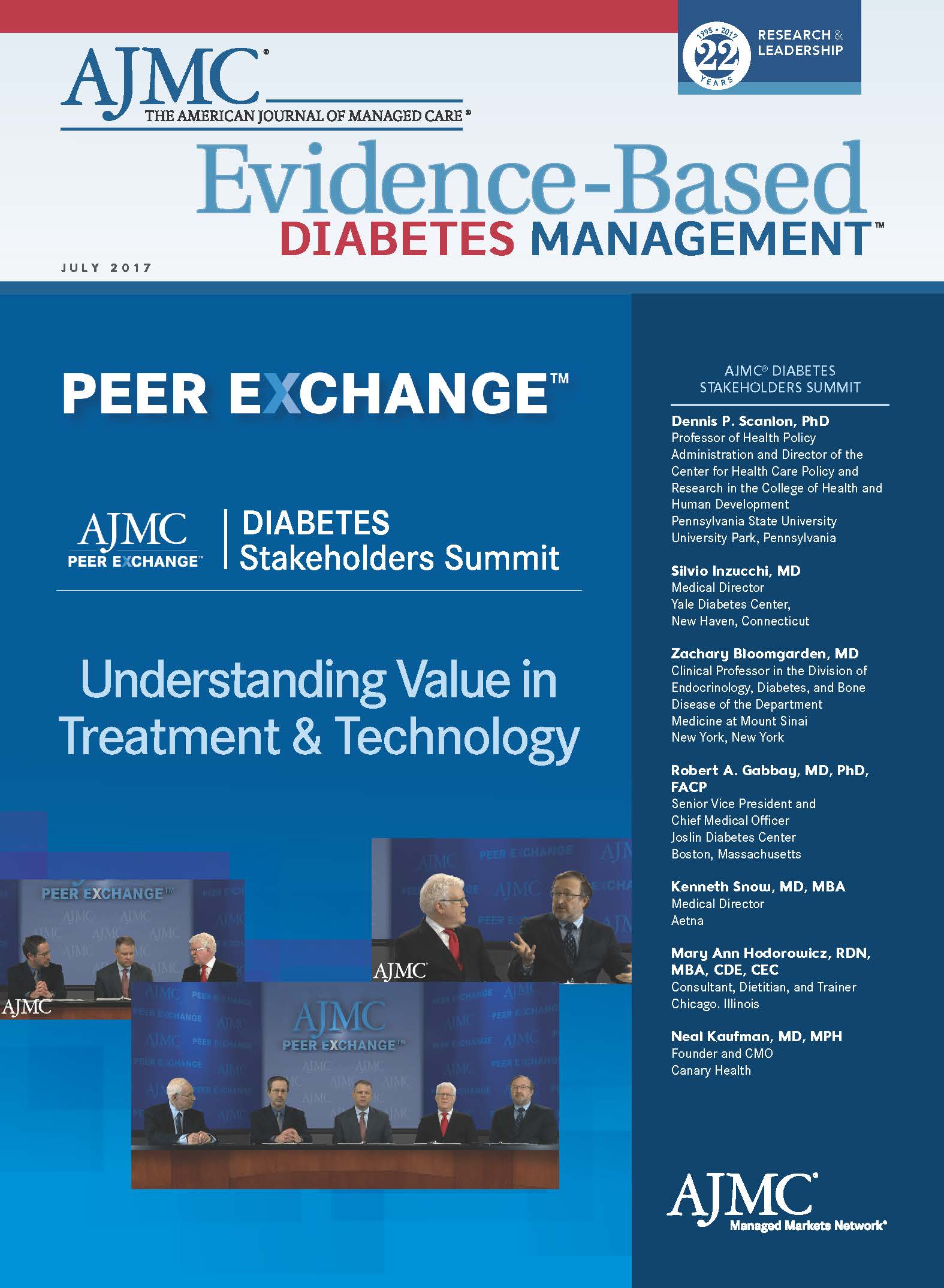- Center on Health Equity and Access
- Clinical
- Health Care Cost
- Health Care Delivery
- Insurance
- Policy
- Technology
- Value-Based Care
Can SGLT2 Inhibitors Prevent Heart Failure in a Broad Population?
A study presented at the 2017 Scientific Session of the American College of Cardiology uses claims data to examine whether SGLT2 inhibitors offer a protective benefit against heart failure.
A study of nearly 365,000 patients taking medication for type 2 diabetes (T2D) has found that sodium glucose co-transporter-2 (SGLT2) inhibitors outperform other treatments for the disease in key ways—and may help prevent heart failure (HF) in patients with T2D not yet diagnosed.
Results from the study, called CVD-REAL, were first presented March 19, 2017, at the 66th Scientific Session of the American College of Cardiology (ACC).1 (A related paper was published in May in Circulation.2) The study, which covered patients from the United States and 5 European countries, examined some questions left unanswered by the EMPA-REG OUTCOME study, which was the first cardiovascular outcomes trial (CVOT) that did not merely find that a T2D therapy was safe, but that it could offer cardioprotective benefits and reduce deaths.3
But because EMPA-REG OUTCOME was a safety trial required by the FDA, it studied high-risk patients, and it only examined 1 drug, empagliflozin (Jardiance). In an interview at ACC prior to presentation of the results, AstraZeneca’s Jim McDermott, vice president for medical affairs, Diabetes, said CVD-REAL was designed to ask whether the effects on HF are a class effect for all SGLT2 inhibitors, if these effects could be applied to a broad population, and “if they can be demonstrated in a real-world environment.” AstraZeneca funded the study.
Researchers in the CVD-REAL study gathered data from patients 1 of 3 approved SGLT2 inhibitors: dapagliflozin (Farxiga) from AstraZeneca; canagliflozin (Invokana) from Janssen; and empagliflozin from Boehringer-Ingelheim and Eli Lilly. They also matched data from patients taking other glucose-lowering therapies. Compared with other T2D drugs, the SGLT2 inhibitor class:
- Reduced the rate of hospitalization for HF by 39%
- Reduced the rate of death from any cause by 51%
Researchers also computed a composite endpoint of hospitalization for HF and death from any cause and found that SGLT2s inhibitors reduced this by 46% compared with other T2D therapies.
SGLT2 inhibitors work through a unique mechanism of action, which causes excess blood glucose to be expelled through urine. McDermott said this mechanism has been shown to have a diuretic effect that positively affects blood pressure (and has been shown to help patients lose weight), although this effect is not well understood.
EMPA-REG OUTCOME raised the curtain on potential new benefits that CVD-REAL sought to explore. Could SGLT2 inhibitors not only treat diabetes, but also prevent HF in these patients?
Mikhail Kosiborod, MD, the study’s lead author and a cardiologist at St. Luke’s Health System in Kansas City, Missouri, said in his presentation at ACC that the results suggest a “heart failure prevention signal,” because so few of the study participants had been diagnosed with cardiovascular disease at baseline.
McDermott agreed. “Eighty-seven percent of the patients did not have predefined cardiovascular disease,” he said. “This tells me we can apply the results to a much broader population.”
The study did not include results by individual drug. Of the data reviewed for the HF analysis, 41.8% of patients were on dapagliflozin, 52.7% on canagliflozin, and 5.5% on empagliflozin. The US population was more heavily weighted with canagliflozin users, where it was approved first, while the European data had more dapagliflozin users. Because the results were so consistent across different countries, McDermott said, they point to a class effect.
CVD-REAL will continue with more countries participating, McDermott said. Besides the United States, the first study included Denmark, Norway, Sweden, the United Kingdom and Germany; future studies may include data from Canada, Mexico, and Japan.
The expense of CVOTs has raised the question whether data-driven studies, such as CVD-REAL, could be the wave of the future. But both McDermott, in the interview, and Kosiborod, in his presentation, said CVOTs remain extremely important. “We need more and more data from various sources,” Kosiborod said.1. Kosiborod M, Cavender MA, Norhammar A. Lower rates of hospitalization for heart failure and all-cause death in new users of SGLT2 inhibitors: the CVD-REAL study. Presented March 17-19, 2017, at the 66th Scientific Session of the American College of Cardiology, Washington, DC. Abstract 415-14. acc.org/latest-in-cardiology/articles/2017/03/13/17/58/sun-2pm-cvd-real-study-lower-rates-of-hospitalization-for-hf-in-new-users-of-sglt-2-inhibitors-vs-other-glucose-lowering-drugs-acc-2017.
2. Kosiborod M, Cavender MA, Fu AZ, et al. Lower risk of heart failure and death in patients initiated on SGLT2 inhibitors versus other glucose lowering drugs: the CVD-REAL study [published online May 18, 2017]. Circulation. 2017. doi: 10.1161/CIRCULATIONAHA.117.029190.
3. Zinman B, Wanner C, Lachin JM, for the EMPA-REG OUTCOME Investigators. Empagliflozin, cardiovascular outcomes, and mortality in type 2 diabetes. N Engl J Med. 2015;373(22):2117-2128. doi: 10.1056/NEJMoa1504720.


